My DNA testing journey began back in 2011 when free tests were offered to the public via the Roots Into the Future Program – 23andme’s partnership with the National Urban League. They were looking for data, and many of us were looking for family history clues and more details regarding our ethnicity given our history in this country. We in the genealogy community were grabbing them up like…well, like they were free! With some of us, “free” turned into “free-nzy”. Needless to say , I am sure 23andme received more than enough genetic data to fill their DNA coffers, I mean databases. I took the bait and ordered a few kits for family members. We received our kits, registered them, surrendered our spit, sent off the kits, and a number of weeks later we got an email saying our results were ready!
We were then able to log in and see our ancestry composition, our medical predispositions, and a list of DNA matches! Kin folk! I think the latter was and continues to be the most intriguing to me. How did these people end up being my cousins?
Anyway this is pretty much the protocol for all of the dna testing services. This sort of DNA test is called an Autosomal test and is used in the genealogy community to confirm ancestral lines and breakdown brick walls! The following is my own “lay person’s” explanation of what an autosomal DNA test is.
An Autosomal sometimes called an “admixture” test, provides DNA testing for ethnicity so that you can get more information on your ancestors places of origin . The test provides data on ancestral lines that are not your maternal (mother’s mother mother and so on) or paternal(father’s father father and so on) lines. In other words, all of your other ancestors. It only goes back so far, it is not inherited evenly by siblings (perhaps only if they are identical twins). Autosomal data recombines and can disappear over generations. The autosomal tests of Family tree DNA and 23andme also provide the tester with haplogroup assignments. Male testers will receive two haplogroup (genetic signature) assignments that correspond to their X(maternal) and Y(paternal) chromosomes. Female testers will only receive one haplogroup assignment for their X chromosome since females do not have a Y chromosome.
You can conduct more research on these haplogroup assignments for by utilizing the two other types of tests for genealogy – Mitochondrial DNA (mtDNA) testing which tests your maternal line (the X chromosome) and Y Chromosome DNA (Y-DNA) testing which tests the paternal line (the Y chromosome). Only males can take the paternal test because they have the Y chromosome. I will discuss these two tests at a late date. I would recommend starting your DNA testing with the Autosomal test.
All three services provide the following:
- profile setup/settings/privacy controls
- searching, sorting, and filtering of DNA matches
- a messaging interface for communication with matches
- linking or building a family tree
- a presentation of your ancestors countries/regions of origin
- a list of DNA matches
- a location map of your matches
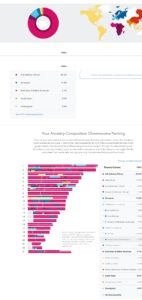
23andme was the first dna testing platform that I used for testing. They also offer separate test kits for medical DNA testing. This was included with our free kits. The 23and me “Relatives in Common” feature allows you to see the matches that you have in common with a selected match and if you are matching them on the same chromosome segment(s). A match on the same segment would indicate a shared ancestor. You could then compare family trees and research to see if you could identify the common ancestor. I really appreciate this relatively new feature that makes it so much easier to “triangulate” or zero in on matches that share a common ancestor. Before it’s introduction, a tester had to either use a cumbersome interface that involved a trial and error selection process or would have to download matches into a spreadsheet and then sort the matches by chromosome and segment. The tester and the selected match have to be sharing profiles or participating in “Open Sharing” to use the “Relatives in Common” feature.
When setting up your profile, you will be prompted to participate in “Open Sharing”. You should participate in open sharing if you want to identify matches that you have in common with any given match. The goal would then be to work with them to identify your MRCA (Most recent common ancestor) thereby (hopefully) helping you to piece together your family story.
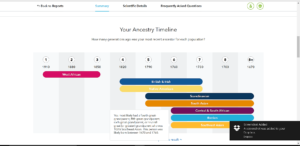
23andme’s Ancestry Composition does attempt to provide you with detailed information regarding the reference data that comprises the populations and that your DNA sample is compared to. They also list some of the ethnic groups.
There is also a new Ancestry Timeline feature that uses your Ancestry Composition results to estimate the generation range where you are likely to have had a single relative who descended from a single population. Hovering over any one of the populations will provide additional information that might say something like – “You most likely had a third great-grandparent, fourth great-grandparent, fifth great-grandparent, sixth great-grandparent, or seventh great (or greater) grandparent who was 100% Iberian. This person was likely born between 1670 and 1790.”
If your are using 23andme’s DNA testing platform to aid you in your family research, I would highly encourage you to populate your profile with the surnames and locations of your ancestors. You can no longer build a family tree on 23andme, however they are preserving any legacy trees. You can also post a link to any family trees that are stored elsewhere on the internet, in your profile. You should also participate in “Open Sharing” in order to take advantage of the very helpful “Relatives in Common” feature. Over all, i like 23andme’s testing platform. While I like the new features previously mentioned, I still miss the old interface. I found it to be a tad more user friendly.
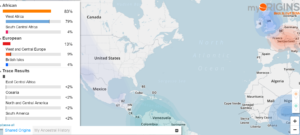
Family Tree DNA’ s version of the autosomal DNA test is called the “Family Finder”. Of the three major testing companies, FTDNA is like the OG (old guard) in the DNA testing game. It requires cheek swab versus spitting into a vial like the other two companies. Though it currently does not boast as large a database of testers as the other two services, they do allow autosomal test results from other services to be transferred to theirs. They also provide material and paternal DNA testing and you can link those results to your autosomal test. They also have many DNA project groups that testers can join. There are however some caveats to the transferring which I will not discuss here. I like the way that the information is presented in their user interface. I like the “In Common with” feature that lets you see who else is sharing on the same DNA segment as a match that you have selected. I also like the “myOrigins” presentation of your ancestors origins.
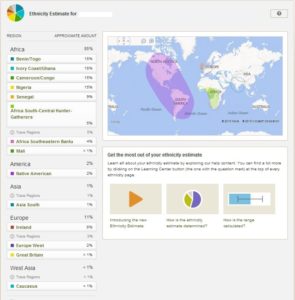
AncestryDNA provides an “ethnicity estimate” , a list of DNA matches, and DNA circles.While I like AncestryDNA’s detailed ethnicity estimate , it is based on the modern day boundaries of the countries identified. Ancestry does not reveal specific ethnic groups, that have historically transcend boundaries . New countries may have been formed and boundaries have probably changed and ethnic groups may have migrated since our ancestors lived in these places identified by AncestryDNA as places of origin.
According to AncestryDNA, a DNA Circle is a group of individuals who all have the same ancestor in their family trees and where each member shares DNA with at least one other individual in the circle. These circles are created directly from your DNA and your family tree.
AncestryDNA provides a nice interface for displaying a match along with their “public” family tree, ancestor locations, and countries of origin , making it easier to research and identify a common ancestor. I also like AncestryDNA Helper, a Chrome Browser extension that marks matches that are shared with other AncestryDNA kits that you manage. I manage my mother’s kit the browser extension helps me to determine which matches are from her side. The problem is that while there are some testers who have chosen to attach a family trees that they have made “public”, many have chosen the following:
1) not to attach a family tree at all
2) to attach a “Charlie Brown” family tree ( scant information)
3)to attach a tree that is an inaccurate or with little supporting evidence
4) to keep their tree “private , in “lock down” and not view-able
I personally have been guilty of some of the above actions! I am reforming! The good news is that you can and should use the messaging facility to politely communicate with your matches to gain access to their trees or at the very least to exchange family history information. Don’t be shy but do exercise politeness and respect when communicating with your matches. If you do not want to share your precious family artifacts, do share the names, places, and dates. While AncestryDNA is probably the most popular of the major testing companies and boasts the largest database of testers, I personally wish they had better tools for analyzing how you match a person. The other major services allows you to accomplish this analysis by providing what’s called a “chromosome browser”. AncestryDNA does have a “Shared Matches” tab that is visible when you view a match, but I am not clear whether the individuals listed under that tab actually match you on the same segment or if they are just people that you both match through different ancestors. 23andme does a better job of sharing this information because it provides a yes/no column that indicates whether or not you share on the same segment.
Conclusion
There are other testing services including MyHeritage DNA, and African Ancestry . I have not tested at either of these companies. MyHeritageDNA is a newer testing service.
I recommend starting with the oldest members of your family like parents, grandparents, aunts, uncles. If you are a female, you will need to test your father, brother, uncle, or cousin who share the same paternal line in order to obtain your paternal haplogroup assignment.
If you are researching your family, I also recommend including any known family surnames in your profile and attaching a family tree. Be open to responding to queries and invitations to share information with your matches. Also do not be afraid to reach out to your matches. Upload your raw data to GEDmatch.com , A service that allows you to compare your data with others who have uploaded from the three major testing platforms. It also provides additional tools for analysis. Genealogy is a courageous endeavor that involves taking a few calculated risks!
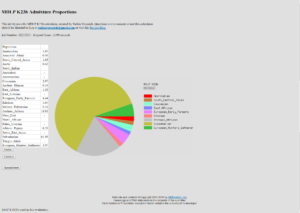
In conclusion, all of these DNA testing platforms have strengths and weaknesses. While a larger database of testers is important, I would recommend going with companies that offer basic tools for doing analysis and comparison as well as haplogroup information. Your decision concerning which DNA testing company to choose and which type of test to utilize should start with a question. What am I trying to find out? My family’s history?Their ethnic identity? More information about my maternal or paternal line?
DNA testing is not a magic wand! However, it can reveal things about your family which were previously obscured. Coupled with your family research, it can provide you with a powerful tool that at he very least can take you on and interesting, sometimes frustrating, always fascinating journey and hopefully help to bring clarity to your understanding of your family’s history.
For a list of additional scholarly resources on Genetic Genealogy and Autosomal DNA testing, sign up for Our Ancestors Revealed blog post notifications!
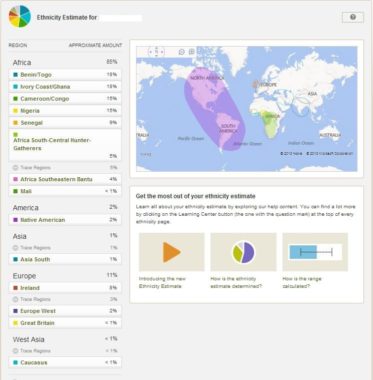
Barb Byron
Thank you for your insight…. having just done my DNA…. after 40+ years of Genealogical Research I am finding the DNA results fascinating… and thought inspiring…. my research is even more ‘spot on’ then I had hoped for…..
karen
Barb, 40+ years of research! That is Phenomenal!Hopefully it will help provide a context that your dna testing will confirm or not. Either way , i think it is a good thing to be closer to the truth.
Tancy Johnson
Thanks for posting this, it really helps. Gives me some ideas as to my next steps to take.
karen
Tancy, thanks for stopping by! I hope you downloaded the resource list! Let me know if I can be of assistance.
Lloyd Curtis
Excellent blog and very informative
Karen Galloway Post author
Thanks Lloyd!